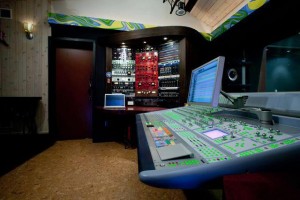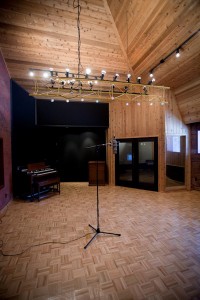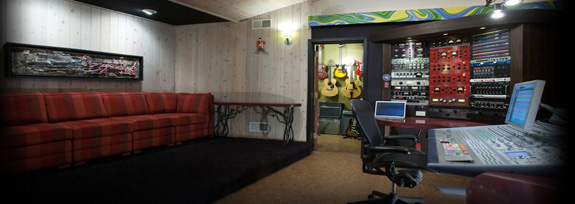Destination Studio: Red Rock Recording
“I always hated tape,” says Kent Heckman of Red Rock Recording. That might seem a controversial statement at first listen – In certain corners of the audio community, them’s fightin’ words. And today, even musicians who never really used tape professionally are often expected to express some misty-eyed nostalgia for the format.
But when Heckman says it, glossing over the remark in his genial, soft-spoken voice, it seems a clear-eared and sensible comment more than a provocative one. I ask him to stop and back up for a second: Wait, why? “Well, it never plays back exactly what you put in, it always gives you some type of head bump, and then there’s the tape hiss…”
Although Heckman’s Red Rock Recording Studio does plenty of work with rock bands and publishing companies, his bread and butter for the past few decades has been acoustic jazz. “And most of the jazz players could never really afford 2” tape anyway,” he says. “You’d get two songs on one reel, or maybe two takes of one song. So you’d end up with 10 or 11 reels, and that’s usually the budget for the whole record!”
He started getting into the habit of recording straight to 2-track DAT when it became available, finding that it would often sound closer to what was coming off the board than anything else available at the time. He kept up with digital recording technology as it evolved, and then, in the 90s, dropped his analog Amek console completely to go all digital, even on the mixing end. He’s never looked back. As of last year, Red Rock even installed a new Avid Icon control surface.
“I like to be able to start mixing as soon as I’m recording, and to be able to push a button and have an immediate scene change instead of spending 15 to 20 minutes re-setting knobs to move between sessions. With digital I’m all there. I love everything about it.”
As 21st century as this all sounds, it’s actually not that far a stretch from the origins of either jazz recording or audiophilia. The goal here is to capture a live performance as convincingly as possible, with the engineer striving to balance and magnify sounds rather than manipulate or reconstruct them.
Since the genre he works in most is so performance-based, Heckman often still sets balances and prints a final 2-track mix live during the session – just like past titans of jazz recording would have done. The multitrack recordings exist almost as a backup.
It’s not that Heckman is interested in avoiding all sense of color. He says he’d just rather get that color going in, with no extra surprises at the capture stage. To this end, a collection of vintage Neumann mics, Urei limiters and Neve channel strips complement a small wall full of DW Fearn valve gear – class A designs with low negative feedback, reminiscent of the classic American tube designs that powered the lush and legendary jazz sessions of the 50s and 60s.
But perhaps the favorite piece of gear at Red Rock is the live room itself. A large, balanced-sounding room with 17-and-a-half-foot vaulted ceilings; resonant without being overbearingly live, and large enough to fit an entire big-band horn section in the main space, with piano, drums and vocals each in separate booths for isolation.
Red Rock keeps surprisingly busy for a studio located in the Pocono Mountains, a wooded 90-minute drive out from New York City and Philadelphia. Owner/operator Heckman has had bands coming up to work with him since the 1980s. But things really picked up in the 90s when he formed relationships with some of the local jazz greats like David Liebman, and the legendary bebop saxist Phil Woods, a man who was once dubbed “the new Bird” and even found himself married to Charlie Parker’s widow shortly after the Bird’s death.
It’s players like these who help keep Red Rock on the map. Often enough, younger artists will want to work with one of these giants, even flying in from overseas. Heckman says that Phil Woods’ one stipulation will usually be: “Fine – But we’re doing it at Red Rock, because I’m not going anywhere!” It’s hard to argue with a world-class studio that’s 15 minutes from your house and always has a parking spot available.
Ironic perhaps, that jazz artists — the ones who specialize in a practically non-commercial format and couldn’t afford 2” tape back in the day — are now the ones who are of most help in keeping an entire large-scale, state-of-the-art studio churning in the mountains of Pennsylvania.
Who knows what that’s about? Maybe they have better patrons, maybe it’s the low cost of real estate up there, or maybe their fans just don’t steal. But whatever it is, Red Rock Recording is approaching 35 years in the studio business, and it shows no signs of slowing down.
Justin Colletti is a Brooklyn-based audio engineer, college professor, and journalist. He records and mixes all over NYC, masters at JLM, teaches at CUNY, is a regular contributor to SonicScoop, and edits the music blog Trust Me, I’m A Scientist.
Please note: When you buy products through links on this page, we may earn an affiliate commission.











Lois Heckman
March 29, 2013 at 1:18 pm (12 years ago)love the article – so well written and accurate. (that doesn’t always happen)
pppPerryandtheMETS
March 30, 2013 at 7:19 am (12 years ago)I never had anything against analog tape, but when ADATS first came out and later when DAWS progressed enough ( approx 2000 IMO )… Digital was always my preferred choice from pure simplicity and convenience AND cost, and no calibrating! It was always clear many musicians or engineers couldn’t really hear the difference anyway, there was a lot of die hard analog purists who suddenly found digital acceptable due to the price of reel of tape.